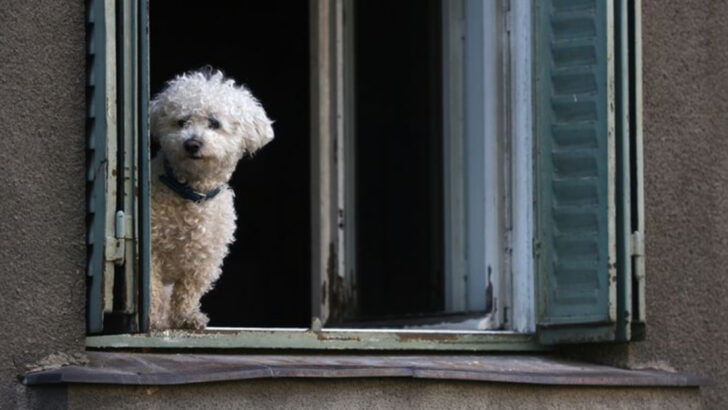Some dogs don’t just miss you when you’re gone—they fall apart.
One minute, you’re grabbing your keys. The next? Whimpers, pacing, full-on meltdowns. Some breeds are wired to be by your side, always. And when they’re not? Cue the heartbreak—and the shredded couch cushions.
This isn’t just clinginess. It’s panic with paws.
These dogs bond hard and fast. Your absence isn’t a break—it’s a crisis. And while the loyalty is sweet, the aftermath can be messy, loud, and sometimes destructive.
Ready to find out which breeds just can’t stand to be left behind—even for a trip to the mailbox? Let’s meet the velcro dogs of the canine world.
Cavalier King Charles Spaniel

With its soulful eyes and gentle demeanor, the Cavalier King Charles Spaniel captures hearts effortlessly. This breed, known for its affectionate nature, thrives on human companionship and feels lost without it. Cavaliers were once the cherished pets of royalty, a history that reflects in their regal yet needy behavior. Their small size makes them perfect lap dogs, though their hearts are as big as their curiosity. Despite their neediness, their joyful companionship is unmatched. Did you know? Cavaliers were named after King Charles II of England, a lover of this very breed. They can become anxious if left alone too long.
German Shepherd

A true working dog, the German Shepherd’s loyalty and intelligence make it a popular choice for service roles. However, this devotion can lead to intense separation anxiety when left alone. Known for their strength and versatility, they require mental stimulation to keep anxiety at bay. Their history as herding dogs means they are accustomed to being with their pack. Without companionship, they may resort to destructive behaviors. Unwavering loyalty is both their charm and their challenge. Fun fact: German Shepherds were first bred in Germany in 1899, making them one of the newer dog breeds. They excel in obedience and training.
Labrador Retriever

Labrador Retrievers are the epitome of friendliness, often seen as the ultimate family dog. Their boundless energy and eagerness to please make them lovable companions but also prone to separation anxiety. Labs were originally used as fishermen’s helpers in Newfoundland, retrieving nets and lines. This historical need for human interaction lingers today. A Labrador left alone may bark, chew, or dig to express its distress. Their joyful spirit needs an outlet, and without it, anxiety may ensue. Did you know? Labradors have been the most popular dog breed in the U.S. since 1991. Their love is as vast as their capacity for play.
Border Collie
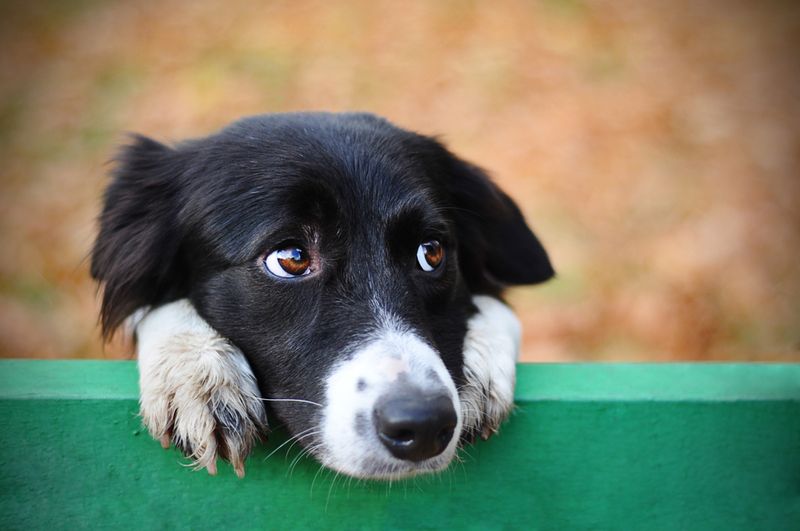
Renowned for their intelligence, Border Collies are natural herders with an instinctive need to work. This drive, coupled with a deep bond to their family, can lead to separation anxiety. Bred for herding livestock, they are happiest with tasks that challenge them mentally and physically. When left alone, their energy might turn into anxiety-driven behaviors. With a heart as keen as their mind, they need engagement to thrive. Fun fact: Border Collies are often considered the most intelligent dog breed, capable of understanding a wide range of commands. Their brilliance requires an equally stimulating environment to prevent anxiety.
Chihuahua

Tiny but full of personality, Chihuahuas are known for their attachment to their owners. This intense bond often results in separation anxiety. Despite their small stature, their emotions are immense, and they quickly become distressed when away from their human. Originating from Mexico, they were companions to the ancient Toltec civilization, a testament to their long history with humans. Their loyalty is as fierce as their little hearts. Did you know? Chihuahuas have the largest brain-to-body size ratio of any dog breed. Their alertness keeps them on edge, especially when their beloved owner isn’t nearby.
Bichon Frise
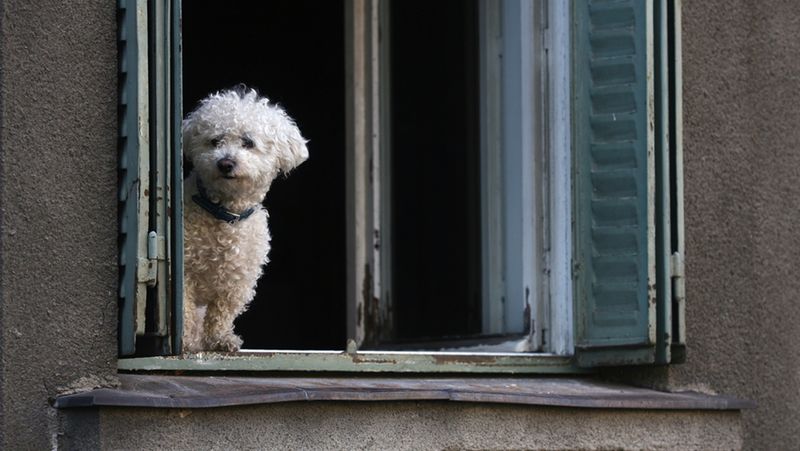
Bichon Frises are bundles of joy, known for their cheerful disposition and fluffy appearance. Their love for human interaction is boundless, often leading to separation anxiety. These dogs were once favored by European nobility, and their regal past shines through their behavior. When left alone, they may bark or whine to express their loneliness. Their playful nature requires constant companionship and stimulation. Fun fact: The name “Bichon” comes from the French word for “lap dog,” reflecting their love for close contact. This breed’s happiness is tethered to being surrounded by love and attention.
Maltese

With its luxurious white coat, the Maltese exudes elegance and charm. This ancient breed has been a companion to humans for thousands of years, making separation anxiety a common trait. Their affectionate nature means they form strong bonds with their families, and solitude is not their friend. Known for their gentle and friendly demeanor, Maltese dogs thrive in loving environments. Leaving them alone can lead to distress, manifesting in barking or pacing. Did you know? The Maltese breed is believed to have originated over 2,800 years ago, making it one of the oldest toy breeds. Their history is as rich as their coat.
Italian Greyhound

Italian Greyhounds, with their slender build and graceful movements, are affectionate companions that deeply bond with their owners. This attachment often leads to separation anxiety. Despite their aristocratic appearance, they are playful and energetic dogs that love being part of the family. When left alone, they might become distressed and engage in anxious behaviors. Their loyalty is unwavering, matched by their need for human connection. Did you know? Italian Greyhounds were adored in Renaissance Italy, featured in many paintings of the era. Their elegance and companionship were celebrated by nobles and artists alike.
Pomeranian
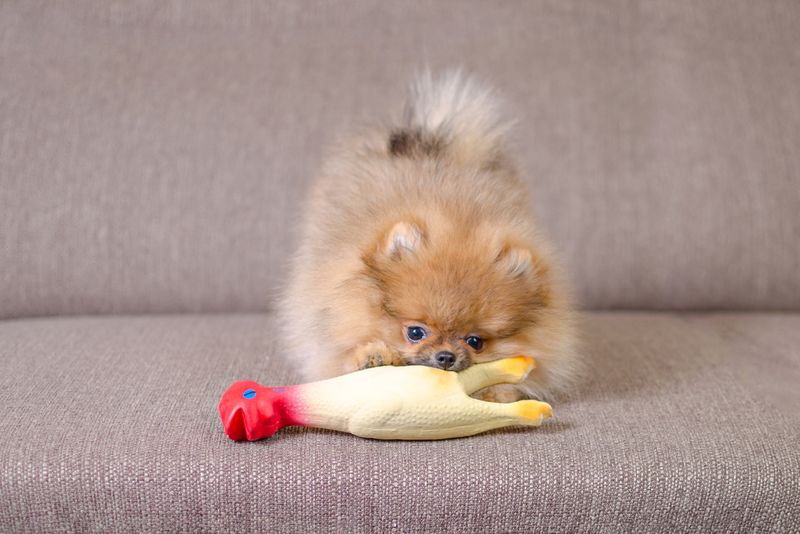
Pomeranians, with their vibrant personalities and fluffy coats, are small dogs with big hearts. Their strong attachment to their owners makes them susceptible to separation anxiety. Originally from the Pomerania region in northern Poland and Germany, they were larger sled-pulling dogs. Over time, they became beloved companions, especially among royalty. Their spirited nature needs constant engagement to avoid anxiety. Fun fact: Queen Victoria loved Pomeranians, aiding their popularity in the 19th century. Their playful antics and affectionate demeanor require a loving presence to keep their spirits high.
Vizsla

The Vizsla’s sleek appearance and boundless energy make it a remarkable companion. Known as the “Velcro dog,” their desire to stick close to their humans is legendary. This loyalty leads to intense separation anxiety when left alone. Originally hunting dogs in Hungary, Vizslas have a strong work ethic and need for activity. Without proper engagement, anxiety can manifest in destructive behaviors. Their love is as vast as their energy, requiring an active lifestyle to match. Did you know? Vizslas are one of the few breeds that have been depicted in ancient art, showcasing their long history as loyal companions.
Miniature Schnauzer

With their distinct appearance and lively personality, Miniature Schnauzers are endearing companions. Their attachment to family members often results in separation anxiety. Bred in Germany as farm dogs, they have evolved into beloved household pets. Their protective nature means they are always alert, but this can lead to anxiety when left without their human. Loyal and energetic, they need interaction to keep anxiety at bay. Fun fact: Miniature Schnauzers are the smallest of the Schnauzer breeds, but their hearts and personalities are anything but miniature. Their dedication to their family is unwavering.
French Bulldog
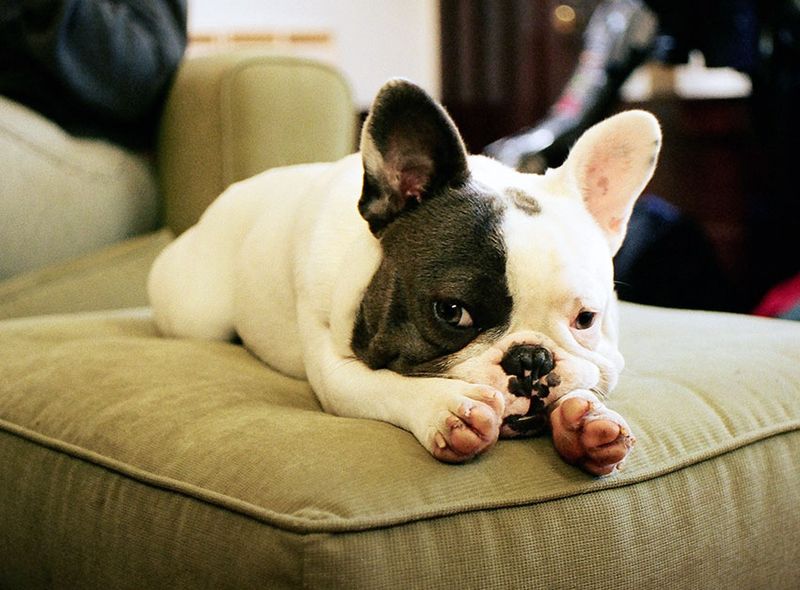
French Bulldogs are known for their affectionate and sociable nature. Their love for human company makes them prone to separation anxiety. Despite their muscular build, they are true lap dogs at heart. Originally bred in England as miniature bulldogs, they became popular in France, hence the name. When left alone, they may become distressed, expressing their anxiety through barking or chewing. Their charm lies in their quirky personality and love for companionship. Did you know? French Bulldogs can’t swim due to their heavy heads and short legs, so they prefer lounging over leaping. Their loyalty is as steadfast as their love for snuggles.
Toy Poodle
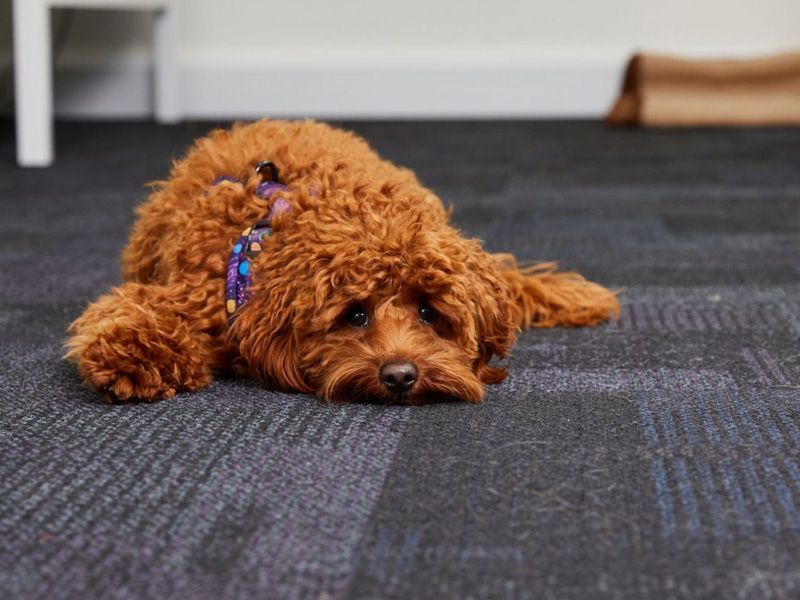
Toy Poodles, with their curly coats and expressive eyes, are intelligent and trainable companions. Their need for constant engagement makes them susceptible to separation anxiety. Originally bred as water retrievers in Germany, they are known for their agility and responsiveness. This intelligence requires mental challenges to prevent anxiety when left alone. Their playful spirit shines through their antics and tricks. Fun fact: Poodles come in three sizes—Standard, Miniature, and Toy—with Toy Poodles being the smallest. Their elegance and intelligence make them exceptional performers and devoted family members.
Italian Spinone
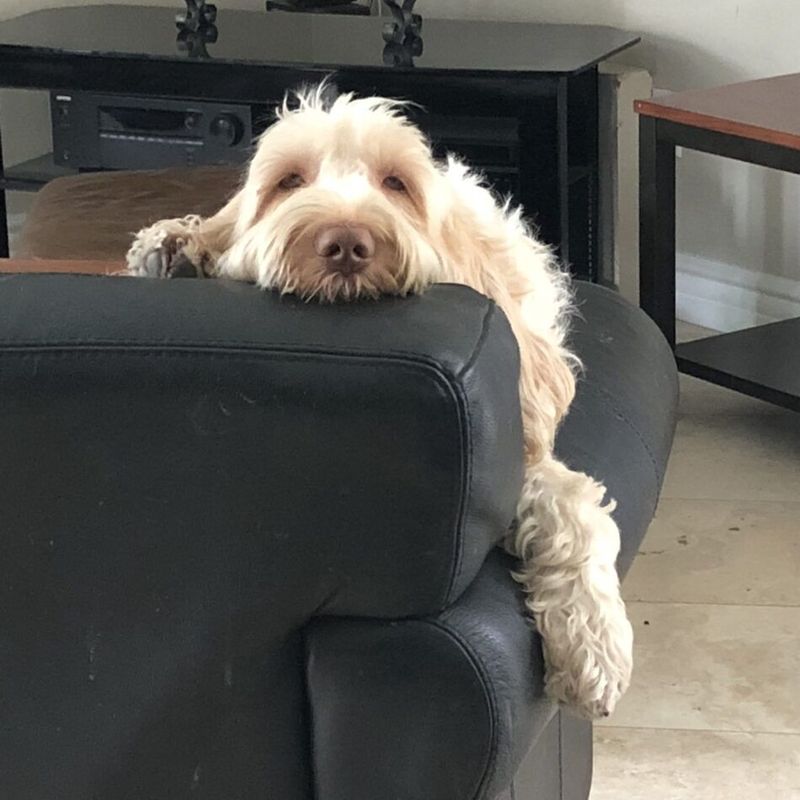
The Italian Spinone is a gentle giant, known for its affectionate nature and soulful eyes. This breed thrives on companionship and can experience separation anxiety when left alone. With a history as a hunting and retrieving dog, Spinones are hardy and need regular exercise. Their loving disposition requires emotional connection to prevent anxiety. When properly engaged, they are loyal and steadfast partners. Did you know? The Italian Spinone is one of the oldest pointing breeds, with origins dating back to Renaissance Italy. Their history is rich with tales of loyalty and dedication to their human companions.
American Pit Bull Terrier
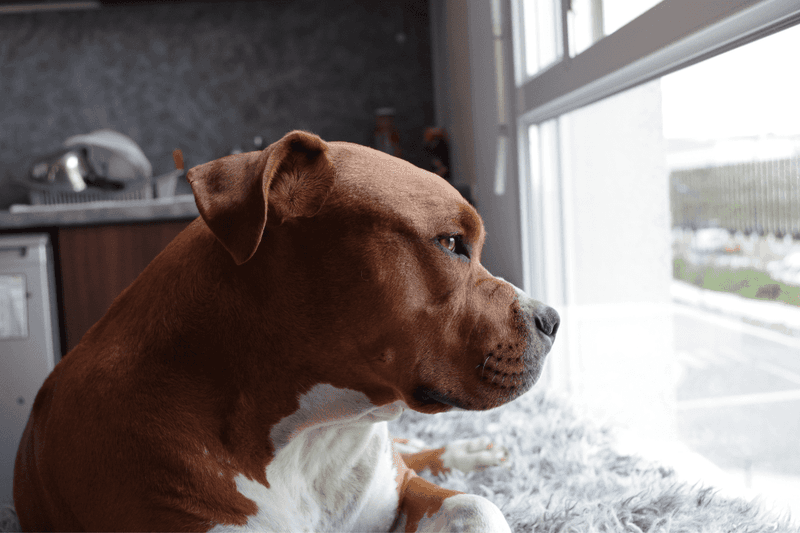
American Pit Bull Terriers are often misunderstood, but their love for humans is undeniable. This breed thrives on interaction, making them prone to separation anxiety. Known for their strength and courage, they are equally recognized for their affectionate nature. Originally bred for bull-baiting, they have since become loyal family pets. Without companionship, they may become anxious, expressing it through chewing or digging. Fun fact: Despite their reputation, Pit Bulls were once known as “nanny dogs” for their gentle nature with children. Their heart is as strong as their determination, making them devoted friends.
Weimaraner
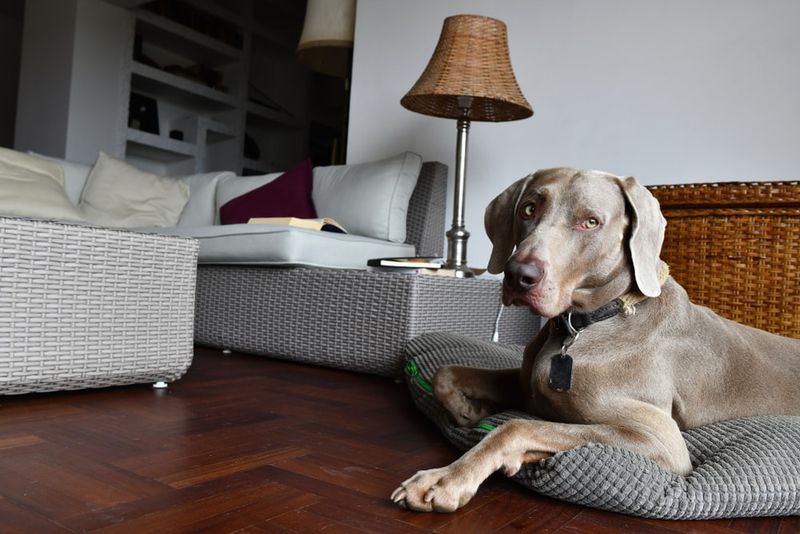
Weimaraners, with their striking appearance and athletic build, are energetic and loyal dogs. Their profound bond with their owners often leads to separation anxiety. Bred as hunting dogs in Germany, they have a strong drive to be active and engaged. When left alone, their anxiety may manifest in barking or escaping. Their intelligence and energy require a stimulating environment to thrive. Did you know? Weimaraners are sometimes called “Silver Ghosts” due to their sleek, silver-gray coat. Their loyalty is as enduring as their need for adventure and companionship.
Cocker Spaniel

Cocker Spaniels are known for their gentle and affectionate nature, making them beloved companions. Their love for human interaction can lead to separation anxiety. Originally bred as hunting dogs, they have a strong desire to please their owners. When left alone, they may express their loneliness through barking or destructive behaviors. Their joyful disposition requires constant companionship and engagement. Fun fact: Cocker Spaniels were the original breed in Walt Disney’s “Lady and the Tramp.” Their charm and devotion make them endearing members of the family.
Boston Terrier
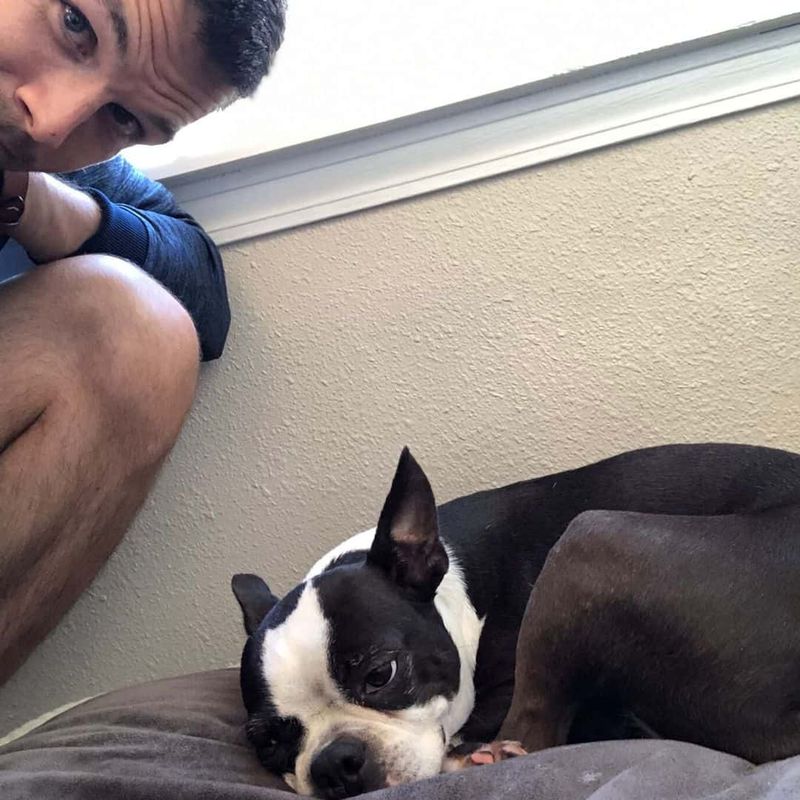
Boston Terriers, with their tuxedo-like markings and lively personalities, are sociable and affectionate dogs. Their strong bond with their families makes them prone to separation anxiety. Initially bred for ratting and fighting, they have since become gentle companions. When alone, they may become anxious, seeking comfort through barking or chewing. Their charming demeanor and playful nature require regular interaction to keep them content. Did you know? Boston Terriers are nicknamed “The American Gentleman” due to their refined appearance and gentlemanly manners. Their love is as enduring as their popularity among dog enthusiasts.

